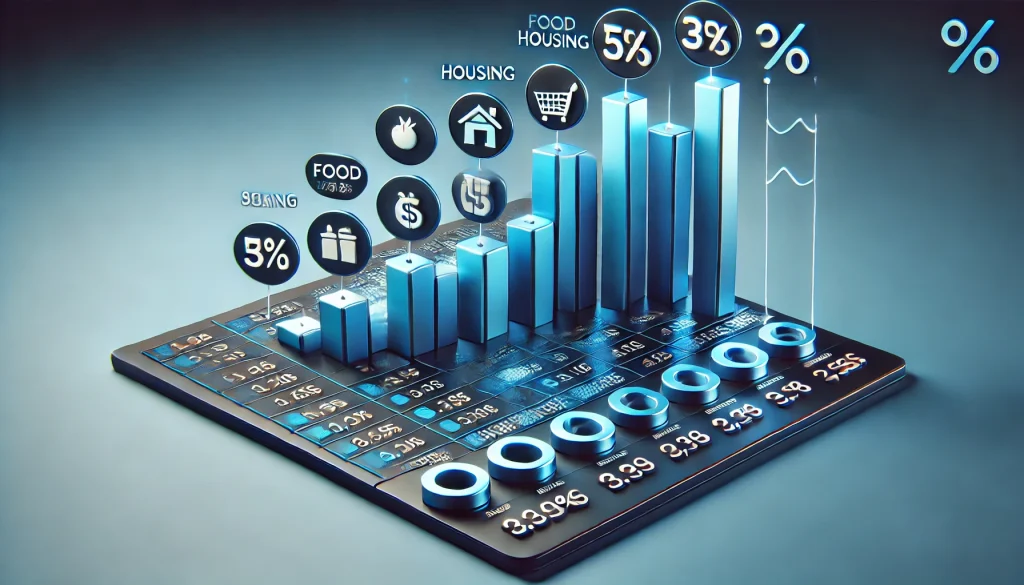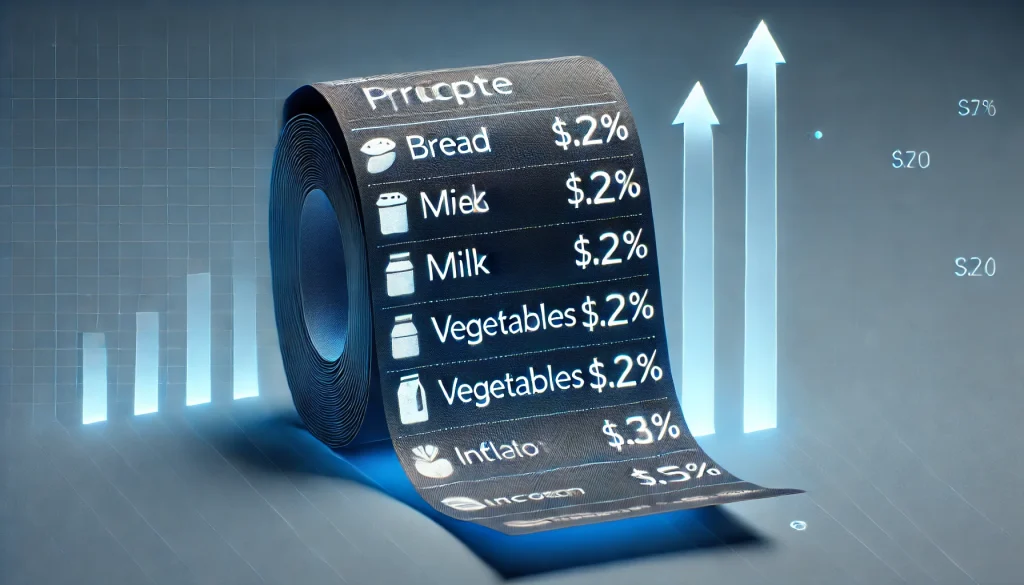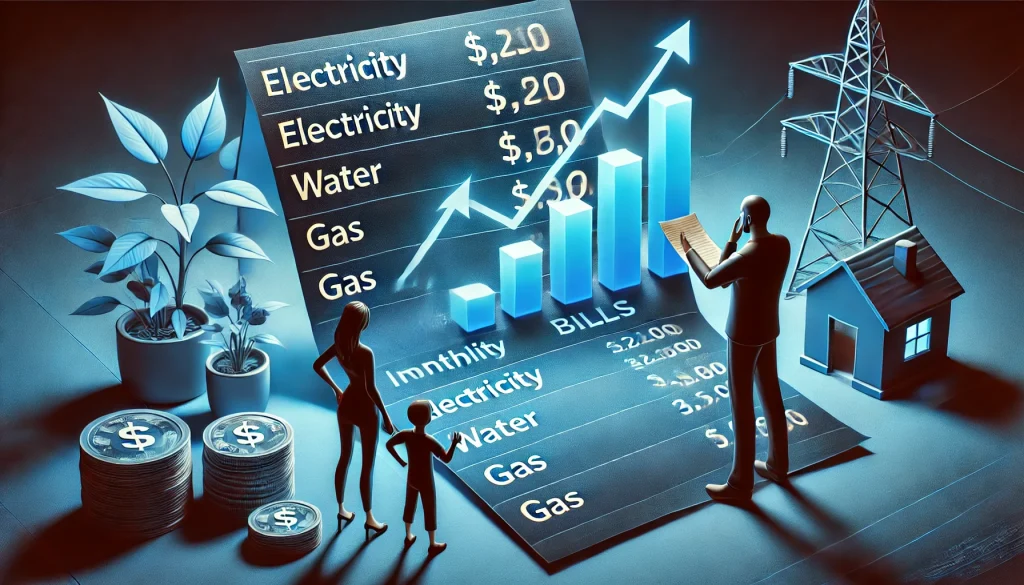
Overview
Inflation rate, a term we hear frequently, continues to dominate economic discussions in October 2024. For households and businesses alike, inflation influences nearly every financial decision. Rising inflation affects everything from the cost of groceries to mortgage rates, creating ripples throughout the economy. Understanding the impact of inflation is crucial, as it shapes everyday life—whether you’re budgeting for monthly expenses or planning long-term investments.
The effects of inflation are felt globally, but its local impact is particularly important for everyday consumers. By recognizing inflation’s influence on prices, wages, and interest rates, you can better manage your personal finances during these uncertain times.
Understanding the Fundamentals of Inflation
Inflation measures the general increase in prices for goods and services over time. It’s often expressed as a percentage, showing how much prices have increased compared to a previous period. In the U.S., the Consumer Price Index (CPI) is a key metric used to track inflation by measuring price changes across a basket of essential items, including food, housing, and energy.
Inflation isn’t inherently negative; moderate inflation is actually a sign of a growing economy. However, when inflation rises too quickly, as we’ve seen in recent months, it erodes purchasing power. In other words, your money doesn’t go as far as it used to. Central banks, like the Federal Reserve, use interest rates to manage inflation. By raising interest rates, the Federal Reserve aims to cool economic activity, reducing inflationary pressures. However, higher interest rates can also make borrowing more expensive, affecting everything from car loans to mortgages.
Key Drivers of Inflation in October 2024
Inflation can stem from several sources, and in 2024, we’re seeing a combination of factors at play:
- Supply Chain Disruptions: Ongoing global supply chain issues, exacerbated by geopolitical tensions, continue to drive up costs for raw materials and finished goods. This pushes prices higher, affecting everything from electronics to groceries.
- Labor Shortages: Persistent labor shortages are contributing to wage inflation. As businesses struggle to attract and retain workers, they are raising wages, which in turn, leads to higher prices for consumers.
- Energy Prices: Rising energy prices remain a significant driver of inflation, particularly in sectors like transportation and manufacturing, where fuel costs play a major role. Recent spikes in oil and gas prices have added pressure to global inflation rates.
These factors have combined to push inflation rates to historically high levels. The Federal Reserve has responded by aggressively raising interest rates, but the effects of these policies take time to materialize.
Effects of Inflation on Everyday Life

Inflation directly affects the daily expenses of households. From higher grocery bills to increased rent, the impact is widespread. Understanding these effects can help you make more informed financial decisions.
Rising Costs of Essentials
One of the most immediate effects of inflation is the rising cost of essential goods. In October 2024, prices for food, fuel, and housing have seen significant increases. According to the Consumer Price Index (CPI), food prices are up by 6% compared to last year, while energy prices have surged by 10%. For the average household, this translates to spending more at the grocery store and higher utility bills.
| Essential Goods | Price Increase (YoY) |
|---|---|
| Food | +6% |
| Energy | +10% |
| Housing (Rent) | +4% |
| Transportation (Fuel) | +7% |
As inflation rate persists, these higher costs eat into disposable income, leaving families with less to spend on non-essential items. For low-income households, inflation can be particularly burdensome, as they spend a larger portion of their income on necessities.
Wage Increases vs. Inflation
While some workers have seen wage increases in response to inflation, these raises often fail to keep pace with the rising cost of living. This phenomenon is known as “real wage stagnation.” In 2024, wage growth in many industries has been outpaced by inflation, meaning that even with a pay raise, workers may not be able to maintain their previous standard of living. For example, if wages increase by 3%, but inflation rises by 6%, workers effectively lose purchasing power.
Inflation and Interest Rates: A Delicate Balance
The Federal Reserve’s primary tool for combating inflation is raising interest rates. By making borrowing more expensive, the Fed hopes to reduce consumer spending and business investments, thus slowing inflation. However, higher interest rates also have their drawbacks:
- Mortgage Rates: In October 2024, mortgage rates have climbed to an average of 7.5%, up from 5% a year ago. This sharp increase has made homeownership less affordable, especially for first-time buyers. Higher rates also discourage homeowners from refinancing their mortgages, which would have otherwise reduced their monthly payments.
- Credit Card Debt: For those carrying balances on credit cards, inflation and rising interest rates are a double hit. Credit card interest rates, which are often variable, have risen in tandem with the Federal Reserve’s hikes, leading to higher monthly payments for consumers.
Inflation’s Impact on Savings and Investments

Inflation doesn’t just affect what you spend—it also influences your savings and investments. High inflation can erode the value of your savings if the interest rate on your account is lower than the inflation rate. For example, if you’re earning 2% interest on your savings but inflation is at 6%, the real value of your savings is declining.
To protect against this, many investors turn to inflation-hedged assets, such as:
- Treasury Inflation-Protected Securities (TIPS): These government bonds are designed to keep pace with inflation, making them a popular choice during periods of rising prices.
- Commodities: Investments in commodities like gold, silver, and oil often serve as a hedge against inflation, as their prices tend to rise along with general inflation.
However, these strategies come with risks. Diversification is essential to managing the uncertainty that inflation brings to financial markets.
Conclusion
Inflation Rate continues to play a significant role in shaping the economic landscape in October 2024. The rising cost of living, driven by factors like supply chain disruptions and energy price hikes, is affecting families across the globe. Higher interest rates, while intended to curb inflation, are making borrowing more expensive, impacting everything from housing to credit card debt. Meanwhile, wage increases are struggling to keep pace with inflation, further eroding purchasing power.
As we navigate these challenges, it’s essential to stay informed and proactive. Whether by adjusting your spending habits, exploring inflation-hedged investments, or keeping an eye on Federal Reserve policies, there are steps you can take to mitigate inflation’s impact on your everyday life.
Key Takeaways
- Inflation’s Reach: From food to fuel, inflation is driving up the cost of essentials, making budgeting more challenging for families.
- Wages vs. Inflation: Wage increases in 2024 are not keeping pace with inflation, resulting in reduced purchasing power for many workers.
- Federal Reserve Policies: Interest rate hikes are designed to control inflation, but they also raise borrowing costs, affecting mortgages, credit cards, and other forms of debt.
Resources
- Forbes. Inflation: What It Means for Cost of Living.
- Investopedia. 9 Common Effects of Inflation.
- McKinsey & Company. What Is Inflation?.
- The Balance. The Impact of Inflation on the Economy.
- World Economic Forum. What Is Inflation and Its Impact on the Cost of Living.
